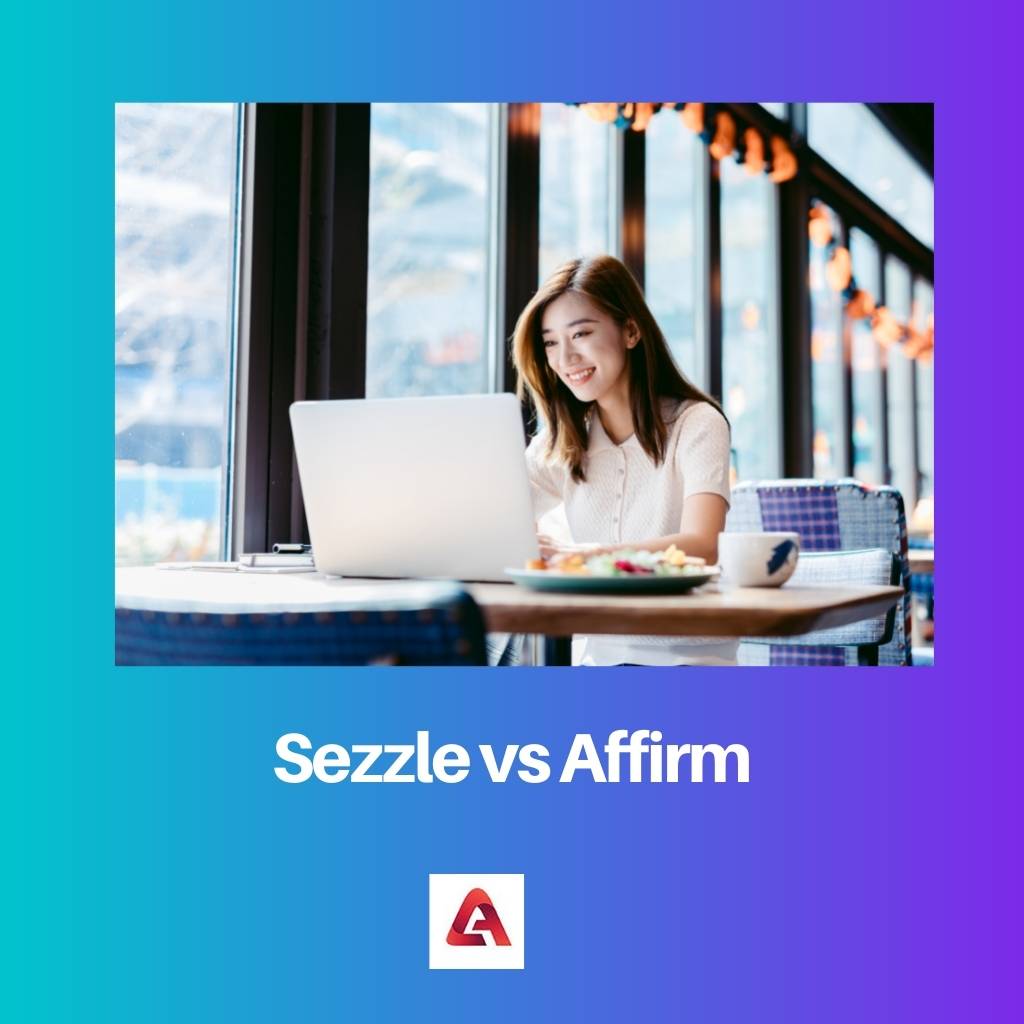Several financial organisations provide finance at the point of sale, digital credit cards, and perhaps even savings accounts when buying online.
Key Takeaways
- Sezzle and Affirm are financial technology companies offering buy now, pay later services.
- Sezzle is focused on smaller purchases, under $1,000, while Affirm is focused on larger purchases.
- Sezzle charges a fee for late payments, while Affirm charges interest on outstanding balances.
Sezzle vs Affirm
The difference between Sezzle and Affirm is that Affirm has a much larger list of sites than Sezzle, and there are no hidden costs or hassles with Affirm. One will have to supply a little more data upfront, but Affirm provides additional payment choices that can help users arrange payments more easily.

Sezzle is a transaction mechanism that allows customers to “Buy Now, Pay Later” using easy, interest-free instalment plans, increasing sales and order quantities.
Affirm is a digital banking provider that sells loans at the point of sale, virtual lines of credit, and even bank deposits to customers who purchase digitally.
Comparison Table
| Parameters of Comparison | Sezzle | Affirm |
|---|---|---|
| Headquartered in | Sezzle is headquartered in Minneapolis, Minnesota, United States. | Affirm is an organization based in San Francisco, CA, United States. |
| Platforms supported | Sezzle only supports SaaS, unlike its peers. | On the other hand, Affirm supports all the platforms, excluding windows and Mac. |
| Target Audience | The target audience of Sezzle is eCommerce businesses and online merchants. | Online merchants who want to offer clients the option of paying overtime |
| Free Trial | Sezzle comes with a free trial of a certain duration in hand for the customers. | On the other hand, Affirm offers no free trial offers to the customers, and they will have to buy the premium version to use it. |
| Training procedure | The training for Sezzle is done either in person or with the documentation process. | Affirm Training is done through documentation and webinars. |
What is Sezzle?
Sezzle is an electronic payment system that enables customers to buy now and pay later – interest-free! When customers purchase with Sezzle, their proprietary authorization system looks into the account to see what kind of personal loan they can provide.
Users of subscribing online retailers can split payments for their goods into four instalments using the Sezzle e-commerce payments system, which was established in 2017.
Sezzle’s screening system examines every purchase separately, considering several aspects such as a soft credit score verification, the consumer’s order history at Sezzle, and the purchase price amount, rather than focusing simply on a consumer’s FICO score for credit risk rating.
What is Affirm?
Affirm Holdings, Inc., or Affirm, is a publicly listed financial services business based in San Francisco, California.
A one-time-use digital card, similar to a digital credit card, is also available from the firm. It can be loaded with the approved loan amount and used with nearly any online merchant that takes credit cards.
Users have 24 hours from the time Affirm issues the card to utilize it. By connecting the virtual card to an Apple or Google account, users can use it in physical locations — the business must allow Apple or Google payment.
Although some associate stores offer 0% APR Affirm financing options lasting up to 2 years, Affirm normally charges interest charges.
There are no other fees to be aware of. There is Sezzkeno late fee if customers complete a late payment. Affirm doesn’t charge any fees for account creation, initiation, or additional fees.
Main Differences Between Sezzle and Affirm
- Sezzle comes with a free trial of a certain duration in hand for customers. On the other hand, Affirm offers no free trial offers to the customers, who will have to buy the premium version to use.
- The Sezzle training is done in person or with the documentation process, whereas Affirm Training is done through documentation and webinars.





